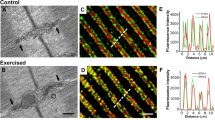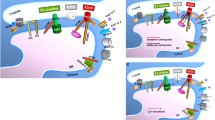Abstract
Contrasting information suggests either almost complete depletion of sarcoplasmic reticulum (SR) Ca2+ or significant residual Ca2+ concentration after prolonged depolarization of the skeletal muscle fiber. The primary obstacle to resolving this controversy is the lack of genetically encoded Ca2+ indicators targeted to the SR that exhibit low-Ca2+ affinity, a fast biosensor: Ca2+ off-rate reaction, and can be expressed in myofibers from adult and older adult mammalian species. This work used the recently designed low-affinity Ca2+ sensor (Kd = 1.66 mM in the myofiber) CatchER (calcium sensor for detecting high concentrations in the ER) targeted to the SR, to investigate whether prolonged skeletal muscle fiber depolarization significantly alters residual SR Ca2+ with aging. We found CatchER a proper tool to investigate SR Ca2+ depletion in young adult and older adult mice, consistently tracking SR luminal Ca2+ release in response to brief and repetitive stimulation. We evoked SR Ca2+ release in whole-cell voltage-clamped flexor digitorum brevis muscle fibers from young and old FVB mice and tested the maximal SR Ca2+ release by directly activating the ryanodine receptor (RyR1) with 4-chloro-m-cresol in the same myofibers. Here, we report for the first time that the Ca2+ remaining in the SR after prolonged depolarization (2 s) in myofibers from aging (~220 μM) was larger than young (~132 μM) mice. These experiments indicate that SR Ca2+ is far from fully depleted under physiological conditions throughout life, and support the concept of excitation–contraction uncoupling in functional senescent myofibers.






Similar content being viewed by others
Abbreviations
- ER/SR:
-
Endoplasmic/sarcoplasmic reticulum
- EGFP:
-
Enhanced green fluorescence protein
- FDB:
-
Flexor digitorum brevis
- RyR1:
-
Ryanodine receptor-isoform-1
- 4-CmC:
-
4-Chloro-m-cresol
- TEA:
-
Tetraethylammonium
- di-8-ANEPPS:
-
di-8-amino naphthyl ethenyl pyridinium
- CPA:
-
Cyclopiazonic acid
- CatchER:
-
Calcium sensor for detecting high concentrations in the ER
- GECI:
-
Genetically encoded Ca2+ biosensor
References
Canato M, Scorzeto M, Giacomello M, Protasi F, Reggiani C, Stienen GJ (2010) Massive alterations of sarcoplasmic reticulum free calcium in skeletal muscle fibers lacking calsequestrin revealed by a genetically encoded probe. Proc Natl Acad Sci U S A 107:22326–22331
Conti A, Gorza L, Sorrentino V (1996) Differential distribution of ryanodine receptor type 3 (RyR3) gene product in mammalian skeletal muscles. Biochem J 316(Pt 1):19–23
Delbono O (2011) Excitation–contraction coupling regulation in aging skeletal muscle. In: Lynch GS (ed) Sarcopenia—age-related muscle wasting and weakness. Mechanisms and treatment. Springer, Victoria, pp 113–134
Demaurex N, Frieden M (2003) Measurements of the free luminal ER Ca(2+) concentration with targeted “cameleon” fluorescent proteins. Cell Calcium 34:109–119
DiFranco M, Quinonez M, DiGregorio DA, Kim AM, Pacheco R, Vergara JL (1999) Inverted double-gap isolation chamber for high-resolution calcium fluorimetry in skeletal muscle fibers. Pflugers Arch 438:412–418
DiFranco M, Neco P, Capote J, Meera P, Vergara JL (2006) Quantitative evaluation of mammalian skeletal muscle as a heterologous protein expression system. Protein Expr Purif 47:281–288
Fryer MW, Stephenson DG (1996) Total and sarcoplasmic reticulum calcium contents of skinned fibres from rat skeletal muscle. J Physiol 493(Pt 2):357–370
González A, Ríos E (1993) Perchlorate enhances transmission in skeletal muscle excitation–contraction coupling. J Gen Physiol 102(3):373–421
Hamill OP, Marty A, Neher E, Sakmann B, Sigworth FJ (1981) Improved patch-clamp techniques for high-resolution current recording from cells and cell-free patches. Pflugers Arch 391:85–100
Hidalgo C, Donoso P, Rodriguez PH (1996) Protons induce calsequestrin conformational changes. Biophys J 71:2130–2137
Jimenez-Moreno R, Wang ZM, Gerring R, Delbono O (2008) Sarcoplasmic reticulum Ca2+ release declines in muscle fibers from aging mice. Biophys J 94:3178–3188
Jimenez-Moreno R, Wang ZM, Messi ML, Delbono O (2010) Sarcoplasmic reticulum Ca2+ depletion in adult skeletal muscle fibres measured with the biosensor D1ER. Pflugers Arch 459:725–735
Jones LM, Yang W, Maniccia AW, Harrison A, van der Merwe PA, Yang JJ (2008) Rational design of a novel calcium-binding site adjacent to the ligand-binding site on CD2 increases its CD48 affinity. Protein Sci 17:439–449
Kabbara AA, Allen DG (1999) Measurement of sarcoplasmic reticulum Ca2+ content in intact amphibian skeletal muscle fibres with 4-chloro-m-cresol. Cell Calcium 25:227–235
Lewis RS (2007) The molecular choreography of a store-operated calcium channel. Nature 446:284–287
Melzer W, Herrmann-Frank A, Luttgau HC (1995) The role of Ca2+ ions in excitation–contraction coupling of skeletal muscle fibres. Biochim Biophys Acta 1241:59–116
Owen VJ, Lamb GD, Stephenson DG, Fryer MW (1997) Relationship between depolarization-induced force responses and Ca2+ content in skeletal muscle fibres of rat and toad. J Physiol 498(Pt 3):571–586
Palmer AE, Jin C, Reed JC, Tsien RY (2004) Bcl-2-mediated alterations in endoplasmic reticulum Ca2+ analyzed with an improved genetically encoded fluorescent sensor. Proc Natl Acad Sci U S A 101:17404–17409
Palmer AE, Giacomello M, Kortemme T, Hires SA, Lev-Ram V, Baker D, Tsien RY (2006) Ca2+ indicators based on computationally redesigned calmodulin-peptide pairs. Chem Biol 13:521–530
Pape PC, Jong DS, Chandler WK (1995) Calcium release and its voltage dependence in frog cut muscle fibers equilibrated with 20 mM EGTA. J Gen Physiol 106:259–336
Park KS, Poburko D, Wollheim CB, Demaurex N (2009) Amiloride derivatives induce apoptosis by depleting ER Ca(2+) stores in vascular endothelial cells. Br J Pharmacol 156:1296–1304
Payne AM, Zheng Z, Gonzalez E, Wang ZM, Messi ML, Delbono O (2004) External Ca2+-dependent excitation–contraction coupling in a population of ageing mouse skeletal muscle fibres. J Physiol 560(1):137–157
Picht E, DeSantiago J, Blatter LA, Bers DM (2006) Cardiac alternans do not rely on diastolic sarcoplasmic reticulum calcium content fluctuations. Circ Res 99:740–748
Posterino GS, Lamb GD (2003) Effect of sarcoplasmic reticulum Ca2+ content on action potential-induced Ca2+ release in rat skeletal muscle fibres. J Physiol 551:219–237
Renganathan M, Messi ML, Delbono O (1997) Dihydropyridine receptor-ryanodine receptor uncoupling in aged skeletal muscle. J Membr Biol 157:247–253
Rossi D, Sorrentino V (2002) Molecular genetics of ryanodine receptors Ca2+-release channels. Cell Calcium 32:307–319
Rudolf R, Mongillo M, Rizzuto R, Pozzan T (2003) Looking forward to seeing calcium. Nat Rev Mol Cell Biol 4:579–586
Rudolf R, Magalhaes PJ, Pozzan T (2006) Direct in vivo monitoring of sarcoplasmic reticulum Ca2+ and cytosolic cAMP dynamics in mouse skeletal muscle. J Cell Biol 173:187–193
Shannon TR, Pogwizd SM, Bers DM (2003) Elevated sarcoplasmic reticulum Ca2+ leak in intact ventricular myocytes from rabbits in heart failure. Circ Res 93:592–594
Shirokova N, Garcia J, Pizarro G, Rios E (1996) Ca2+ release from the sarcoplasmic reticulum compared in amphibian and mammalian skeletal muscle. J Gen Physiol 107:1–18
Somlyo AV, Gonzalez-Serratos HG, Shuman H, McClellan G, Somlyo AP (1981) Calcium release and ionic changes in the sarcoplasmic reticulum of tetanized muscle: an electron-probe study. J Cell Biol 90:577–594
Sztretye M, Yi J, Figueroa L, Zhou J, Royer L, Allen P, Brum G, Rios E (2011) Measurement of RyR permeability reveals a role of calsequestrin in termination of SR Ca(2+) release in skeletal muscle. J Gen Physiol 138:231–247
Sztretye M, Yi J, Figueroa L, Zhou J, Royer L, Rios E (2011) D4cpv-calsequestrin: a sensitive ratiometric biosensor accurately targeted to the calcium store of skeletal muscle. J Gen Physiol 138:211–229
Tang S, Wong H-C, Wang ZM, Huang Y, Zou J, Zhuo Y, Pennati A, Gadda G, Delbono O, Yang JJ (2011) Design and application of a class of sensors to monitor Ca2+ dynamics in high Ca2+ concentration cellular compartments. Proc Natl Acad Sci 13:16265–16270
Taylor JR, Zheng Z, Wang ZM, Payne AM, Messi ML, Delbono O (2009) Increased CaVbeta1A expression with aging contributes to skeletal muscle weakness. Aging Cell 8:584–594
Treves S, Vukcevic M, Maj M, Thurnheer R, Mosca B, Zorzato F (2009) Minor sarcoplasmic reticulum membrane components that modulate excitation–contraction coupling in striated muscles. J Physiol 587:3071–3079
Ursu D, Schuhmeier RP, Melzer W (2005) Voltage-controlled Ca2+ release and entry flux in isolated adult muscle fibres of the mouse. J Physiol 562:347–365
Volpe P, Simon BJ (1991) The bulk of Ca2+ released to the myoplasm is free in the sarcoplasmic reticulum and does not unbind from calsequestrin. FEBS Lett 278:274–278
Wang ZM, Messi ML, Delbono O (1999) Patch-clamp recording of charge movement, Ca2+ current and Ca2+ transients in adult skeletal muscle fibers. Biophys J 77:2709–2716
Wang Z-M, Messi ML, Delbono O (2000) L-type Ca2+ channel charge movement and intracellular Ca2+ in skeletal muscle fibers from aging mice. Biophys J 78:1947–1954
Woods CE, Novo D, DiFranco M, Capote J, Vergara JL (2005) Propagation in the transverse tubular system and voltage dependence of calcium release in normal and mdx mouse muscle fibres. J Physiol 568:867–880
Xi Q, Adebiyi A, Zhao G, Chapman KE, Waters CM, Hassid A, Jaggar JH (2008) IP3 constricts cerebral arteries via IP3 receptor-mediated TRPC3 channel activation and independently of sarcoplasmic reticulum Ca2+ release. Circ Res 102:1118–1126
Ziman AP, Ward CW, Rodney GG, Lederer WJ, Bloch RJ (2010) Quantitative measurement of Ca(2)(+) in the sarcoplasmic reticulum lumen of mammalian skeletal muscle. Biophys J 99:2705–2714
Zou J, Hofer AM, Lurtz MM, Gadda G, Ellis AL, Chen N, Huang Y, Holder A, Ye Y, Louis CF, Welshhans K, Rehder V, Yang JJ (2007) Developing sensors for real-time measurement of high Ca2+ concentrations. Biochemistry 46:12275–12288
Acknowledgments
The present study was supported by grants from the National Institutes of Health/National Institute on Aging AG07157, AG33385, and AG15820 to Osvaldo Delbono; and EB007268 and GM081749 to Jenny Yang, and the Wake Forest University Claude D. Pepper Older Americans Independence Center (P30-AG21332).
Author information
Authors and Affiliations
Corresponding author
Rights and permissions
About this article
Cite this article
Wang, ZM., Tang, S., Messi, M.L. et al. Residual sarcoplasmic reticulum Ca2+ concentration after Ca2+ release in skeletal myofibers from young adult and old mice. Pflugers Arch - Eur J Physiol 463, 615–624 (2012). https://doi.org/10.1007/s00424-012-1073-3
Received:
Revised:
Accepted:
Published:
Issue Date:
DOI: https://doi.org/10.1007/s00424-012-1073-3




